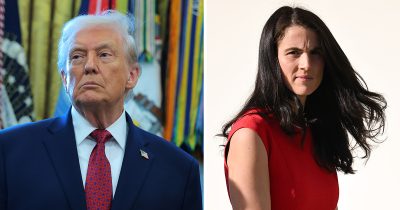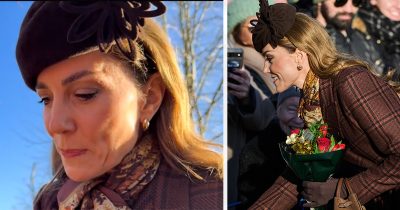
Old photos of Billy the Kid can fetch a fortune, and when a man stumbled upon a dusty old picture at a flea market for just $2, he had no idea he was sitting on a potential gold mine…
Even though it’s been many years since he roamed the Wild West, Billy the Kid still has an undeniable hold on people’s imaginations.
The American outlaw has become one of the most legendary gunfighters of his time, and the fascination around him hasn’t faded one iota during the years since he roamed the west.
There are documentaries, podcasts, books, movies, and even collectors who hunt down memorabilia related to this infamous figure. Billy the Kid is still big business— and nothing proved that more than the time Randy Guijarro bought an old photo for just $2 at an antiques store in California.
Little did he know that small purchase was about to become a global sensation. Before long, media outlets around the world started buzzing with excitement over this supposed one-of-a-kind find. The photo was said to feature the rarely-photographed folk legend himself, Billy the Kid. Even credible news outlets jumped in, with sensational headlines speculating it could fetch millions at auction.
It seemed like a historical jackpot, right?
The most famous picture
Well, it turns out that the story might not be as clear-cut as everyone thought.
Genuine images of Billy the Kid are incredibly scarce, with only a handful known to exist, making them highly sought after by collectors and history buffs alike.
The most famous of these few images is a tintype taken in 1879 or 1880 at Fort Sumner, New Mexico. This photo shows Billy the Kid in his rugged, Old West style —rumpled hat, bulky sweater, layers of clothes, and a Winchester rifle casually at his side, with a Colt revolver holstered on his hip.

This tintype, called the Dedrick tintype, has a fascinating history of its own, and it’s all tied to Billy’s close friend Dan Dedrick. Billy himself gave the photo to Dan, and their friendship is well-documented by historians.
When Dan passed away in 1938, the tintype stayed in the family, eventually making its way to his nephew, Frank Upham.
For decades, it remained a treasured family heirloom, eventually finding a temporary home at the Lincoln County Heritage Trust before the family reclaimed it and sold it in 2011.
That’s when things really took off — because this one-of-a-kind tintype fetched a staggering $2.3 million at auction!
Window into the past
It was purchased by private collector William Koch, who undoubtedly saw it as a piece of living history. The tintype wasn’t just a simple snapshot; it was a window into the past, capturing the essence of the notorious outlaw and his gritty life.
The photo also stirred up an amusing myth: because tintypes create reverse images, it looked like Billy was holding his rifle left-handed. This led to the long-standing (but false) belief that Billy the Kid was a lefty, inspiring the 1958 film The Left Handed Gun, starring Paul Newman as the infamous gunslinger.
Authenticating such old photographs isn’t as easy as just comparing facial features; it involves tracking down the picture’s provenance, or the history of its ownership. Without this, a photo’s authenticity is pretty much impossible to verify.

But in the case of the Dedrick tintype, there’s a clear line of ownership from Billy’s own friend all the way through to modern-day collectors. That’s a big part of what makes it so special — and worth millions. The blog Wild West Josh has done a great job explaining this, detailing how the process of verifying old photographs works.
The croquet photo
So, let’s dive into the story behind this famous photo that Randy Guijarro bought for just $2 from a collectibles store in Fresno County, California.
Back in 2015, the narrative was that Guijarro had no idea what he had stumbled upon. The faded tintype, measuring 4 x 5 inches, was tucked away in a pile of old photos inside a cardboard box at a junk shop — a treasure just waiting to be unearthed.
”I really just liked the looks of [it],” Guijarro told National Geographic.
”It’s a tintype, and it’s a country scene.”
But when he took a closer look, using a magnifying glass, he realized there was more to this image than he initially thought. The photo showed a group of people casually playing croquet, with a young man in a striped sweater whom Guijarro believed was the notorious Old West outlaw.
Gathering evidence
Guijarro and his wife Linda quickly realized they might be sitting on a goldmine.
If the photo did indeed feature Billy the Kid, they had something truly unique on their hands. Determined to confirm its authenticity, they spent several years researching and gathering evidence to prove that the young man in the striped sweater was, in fact, the infamous outlaw.
However, many people dismissed the claim outright, thinking it was just too unbelievable.
“It took us a year [of] initial research, reading up and getting up to speed. Linda and I became authenticators and historians by default,” Guijarro said.
“We spent the next four years solid going at this, traveling throughout the Southwest, calling people, going to Western shows, talking to experts.”
Taken in the summer of 1878
Eventually, there was a breakthrough.
The auction house Kagin’s, based in San Francisco, managed to authenticate the photo. According to their experts, the image captured Billy the Kid, several members of the Regulators, along with friends and family.
They concluded it was taken in the summer of 1878, shortly after a wedding, just a month after the gang’s involvement in the brutal Lincoln County War.

Kagin’s didn’t take the authentication process lightly; after all, the company’s reputation was at stake. David McCarthy from Kagin’s admitted they were initially skeptical when Guijarro brought the photo to them.
”We had to be certain that we could answer and verify where, when, how, and why this photograph was taken,” McCarthy told The Guardian in 2015.
”Simple resemblance is not enough in a case like this – a team of experts had to be assembled to address each and every detail in the photo to ensure that nothing was out of place.”
Value of $5 million
In the end, the auction house provided insurance for the rare photo at a value of $5 million.
Experts were also convinced that the game being played in the photo was indeed croquet, which became popular in the 1860s, fitting the period believed to be depicted.
”It’s clearly croquet. You can see the hoops, the balls, the mallet, the center peg. They’re all there. It’s a fascinating picture,” said Liz Larsson from the UK’s Croquet Association.
It was also said that the photo, now authenticated, could be worth millions of dollars.
A big bluff?
After the initial buzz in 2015 about the photo’s authenticity, things quieted down considerably. Instead, skeptics began to make their voices heard.
One of the most vocal critics of the photo’s authenticity is Wild West Josh, a native Texan who’s been fascinated with the Old West for ”as long as he can remember.”
He argues that Guijarro’s image doesn’t actually depict Billy the Kid — and he has several reasons to support his claim. Wild West Josh points out that there was a specific reason this famous photo made headlines in 2015.

He suggests that it was part of a media blitz designed to generate excitement for the National Geographic documentary narrated by Kevin Costner, titled Billy the Kid: New Evidence.
Several experts appeared in the documentary, and their arguments for the photo’s authenticity seemed convincing. Even the show’s executive producer, Jeff Aiello, stated that with the amount of evidence presented, it was more outrageous to suggest that it didn’t depict Billy and the Regulators.
”Every single old west expert disagree”
According to True West Magazine, Several experts who are authorities in the field don’t believe the photo is authentic.
One of them, Robert Utley, author of Billy the Kid: A Short and Violent Life, remarked in 2015 that this photo was just another in a long line of images that people wished would be of the Kid. He added that this one had even less credibility than its predecessors, saying: “We so-called experts have been showered with a flood of Billy pictures that their owners were sure were Billy because they looked like Billy.”
Similarly, author Frederick Nolan weighed in, asserting that no matter what paid “experts” claimed, their conclusions were merely conjecture, not fact.
“Regardless of what is said by paid ‘experts,’ their conclusions are CONJECTURE, not FACT. No matter how sophisticated the hype that accompanies them, it’s still hype and nothing else. The ‘proof’ they offer is nothing more than wishful thinking, and the historical value of the image is zero.”
Dragging it around to various auctioneers
California outlaw historian John Boessenecker recalled how Randy Guijarro approached him several years before the documentary aired.
“Bob McCubbin and I told the owner two years ago it is not a photo of Billy the Kid. He refused to believe us and kept dragging it around to various auctioneers, trying to convince them it was real. Finally, he got Don Kagin to accept it. Bob and I have explained in detail to everyone involved why the image has no value. This photo has no more provenance than any of the scores of alleged Billy the Kid images which have appeared on eBay the past 15 years. And don’t talk to me about facial recognition software. When it comes to two-dimensional historic images, it just doesn’t work.”
And let’s not forget Brian Lebel, the auctioneer who sold the only authenticated tintype of Billy the Kid back in 2011. He knows a thing or two about these legendary images! He shared his thoughts and said that he doesn’t think Billy the Kid: New Evidence should be labeled a documentary.
He describes it as ”masterfully edited reality television, produced to entertain, not inform.” For instance, he points out that the film suggests the first time he saw Randy’s photo was in Fort Worth in June 2015, but in reality, Randy had shown it to him several years earlier at a show in California. He notes that many in the industry were aware of the Croquet Kid photo long before, but the editing creates the impression that Randy’s quest unfolds in a whirlwind four-month span — from the Fort Worth show to the airing of the program — which he claims is simply not true.
Not sold yet
So, what’s the real deal with the alleged croquet photo of Billy the Kid? Well, a lot of factors line up, and it very well could be Billy the Kid, but we just can’t stamp it with an official seal of authenticity. Many experts definitely raise some eyebrows when it comes to this intriguing image.
A major factor that complicates the question of the photo’s authenticity is that it still hasn’t been sold—at least, I couldn’t find any evidence of a sale. Money talks, right?
If anyone truly believed in its authenticity, you’d think a collector would have jumped at the chance to snag it for a whopping $5 million by now.

Yet it appears Randy Guijarro hasn’t landed a buyer, which definitely raises some eyebrows, don’t you think?
The photo continues to make rounds on social media and various platforms, frequently accompanied by claims that it depicts none other than Billy the Kid.
I wanted to provide you all with a broader perspective and some background on this image, as there’s often more than meets the eye at first glance.
Regardless of what one believes, it’s undeniably a captivating image that invites us to reflect on a bygone era in America. Perhaps that’s where we should leave it.
What do you think? Does the photo truly depict Billy the Kid, or is it more about our desire to believe it does?




